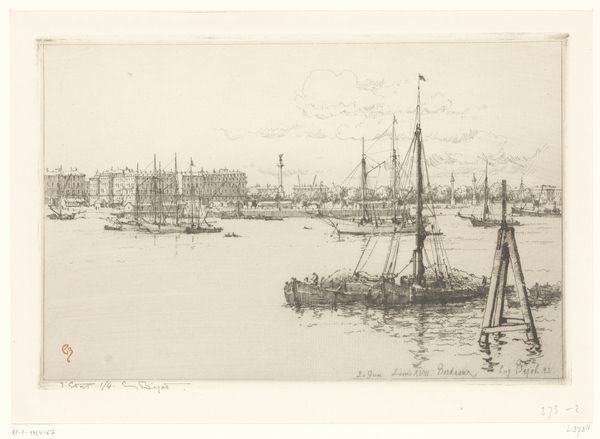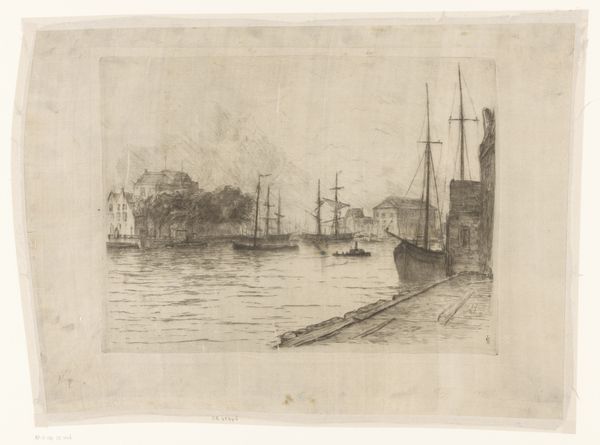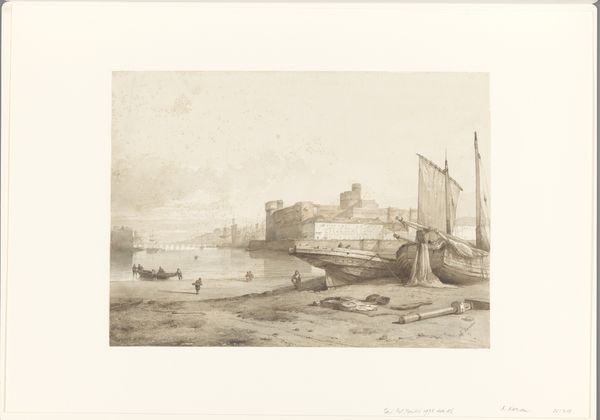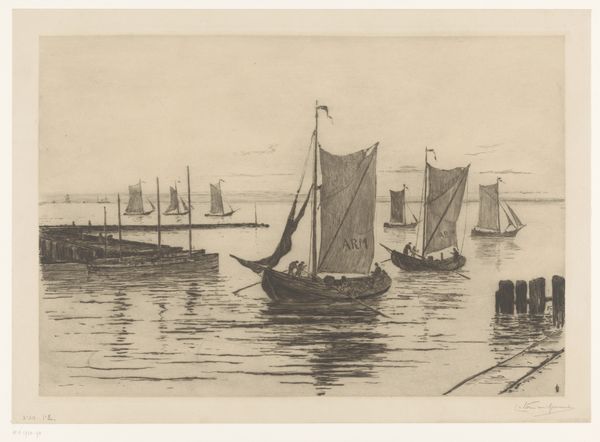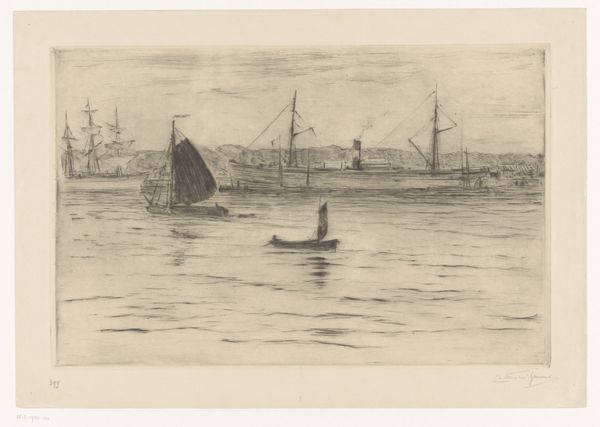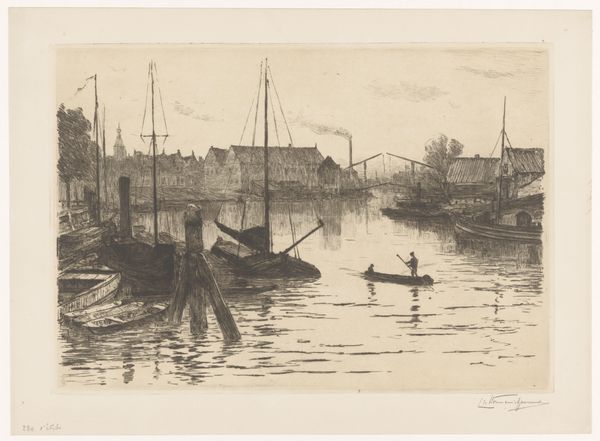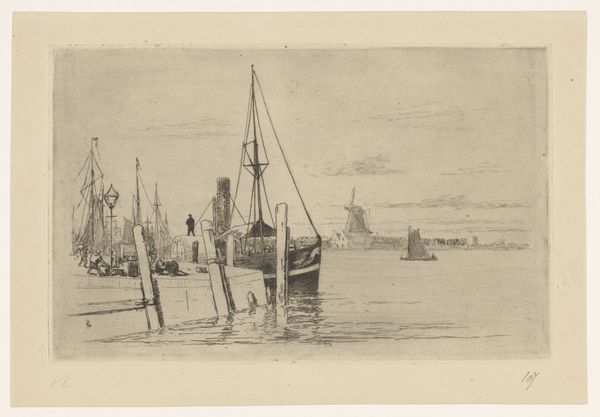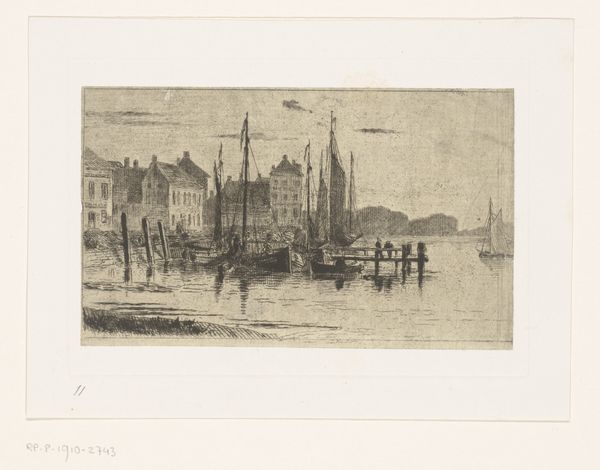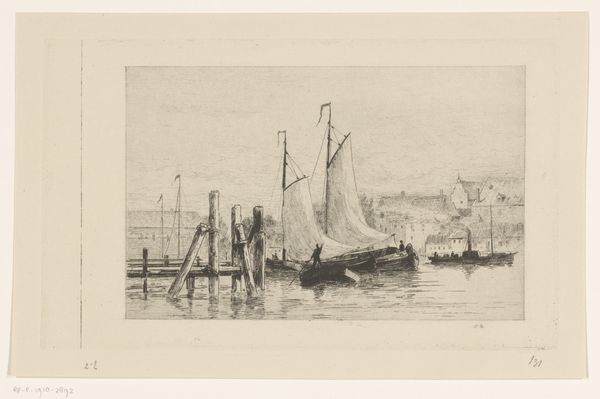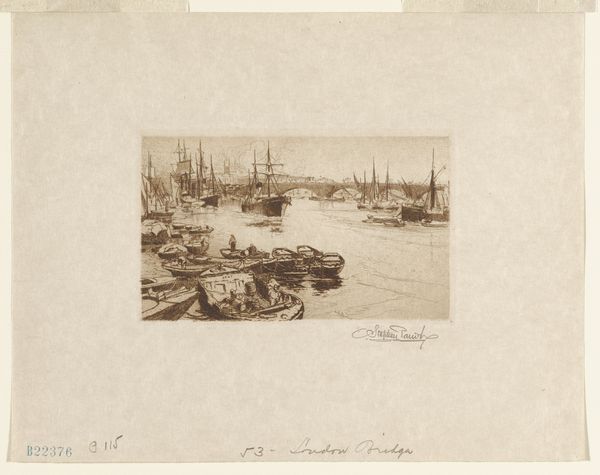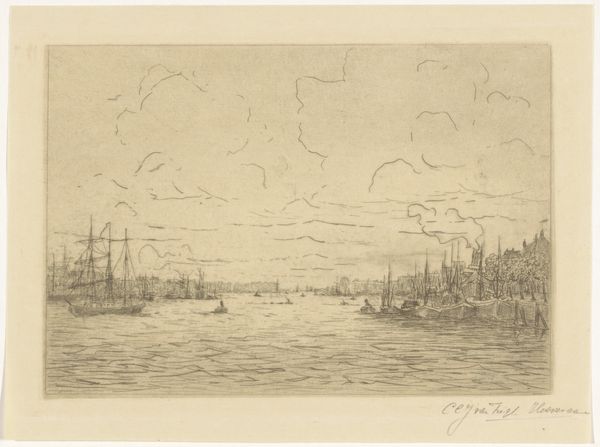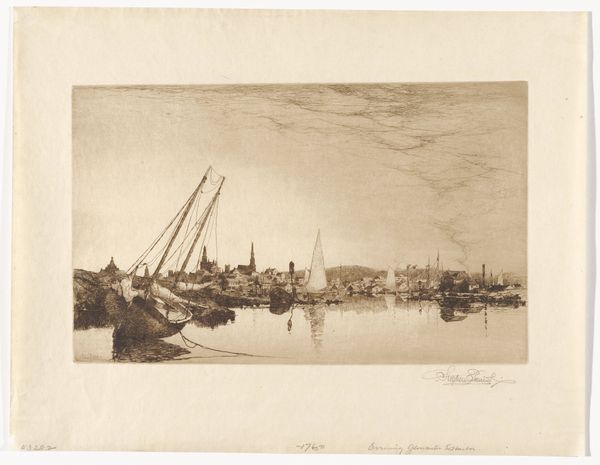
drawing, print, etching, paper
#
drawing
# print
#
etching
#
landscape
#
paper
#
cityscape
#
realism
Copyright: Public Domain
Editor: This etching, "At Bordeaux" by Maxime Lalanne, presents a cityscape view. It evokes a sense of bustling maritime activity contrasted with the more solid, established architecture in the background. What aspects of this work do you find particularly compelling? Curator: This piece serves as a visual record of a specific time and place, yes, but it also prompts reflection on themes of commerce, labor, and urbanization. Look at the boats; who benefited from them and who were likely excluded? The architecture, too, reflects the values of the dominant culture. How do you think the artist positions himself in relation to this scene, and what narrative is implied through that viewpoint? Editor: That’s an interesting way to look at it. I initially just saw it as a pretty cityscape, but now I see how it presents Bordeaux as a hub of economic activity, perhaps overlooking the socio-economic implications. Does the style – the realism – affect the way those ideas are presented? Curator: Absolutely. Realism here might lend a sense of objectivity, as if simply recording what's there, yet every artistic choice, including the selection of viewpoint and what to include in the scene, subtly communicates a perspective. Lalanne captures the surface of Bordeaux but knowing it was a key port in transatlantic trade and colonialism, one can interpret more complex narratives of exploitation. The light and shadows become fraught. Editor: So, even in what seems like a straightforward depiction, there are deeper layers related to historical context and power structures. Curator: Precisely. Analyzing it with considerations about who is present, absent, and whose stories are being told or not, transforms the image into an engaging historical document. Editor: This has given me a completely different understanding of the work, seeing it as less of a passive observation and more of an active statement. Curator: Yes, and perhaps motivates us to look more critically at the representations of similar locations throughout art history.
Comments
No comments
Be the first to comment and join the conversation on the ultimate creative platform.
